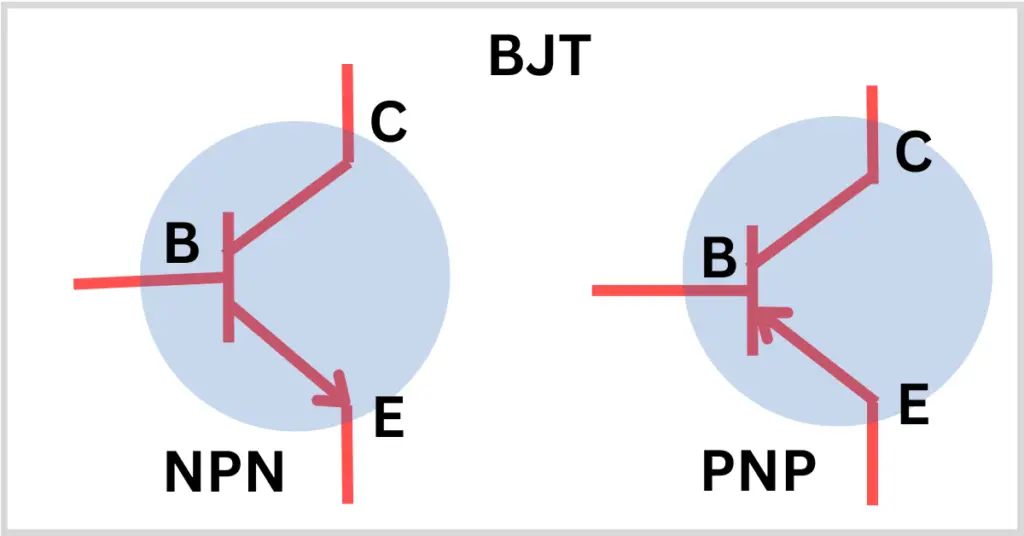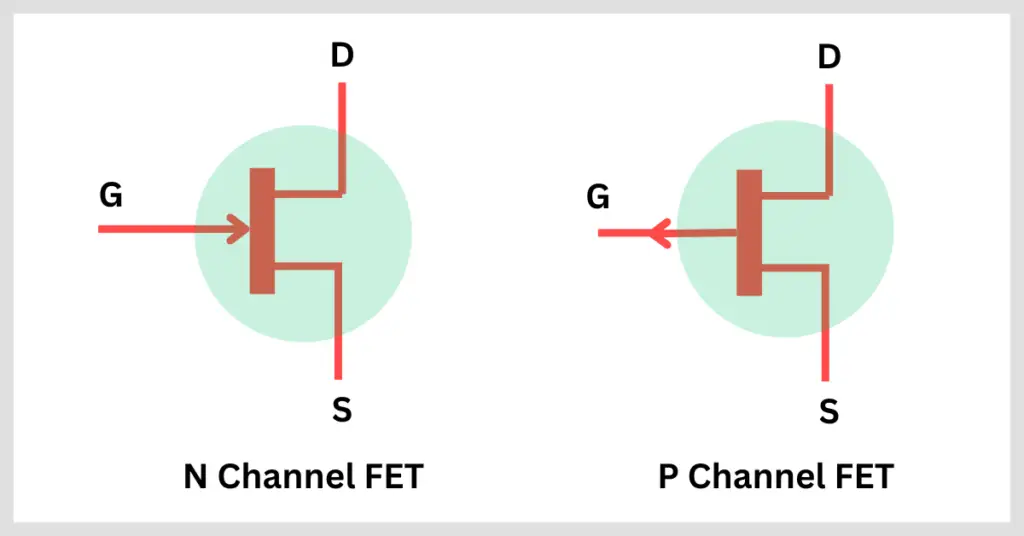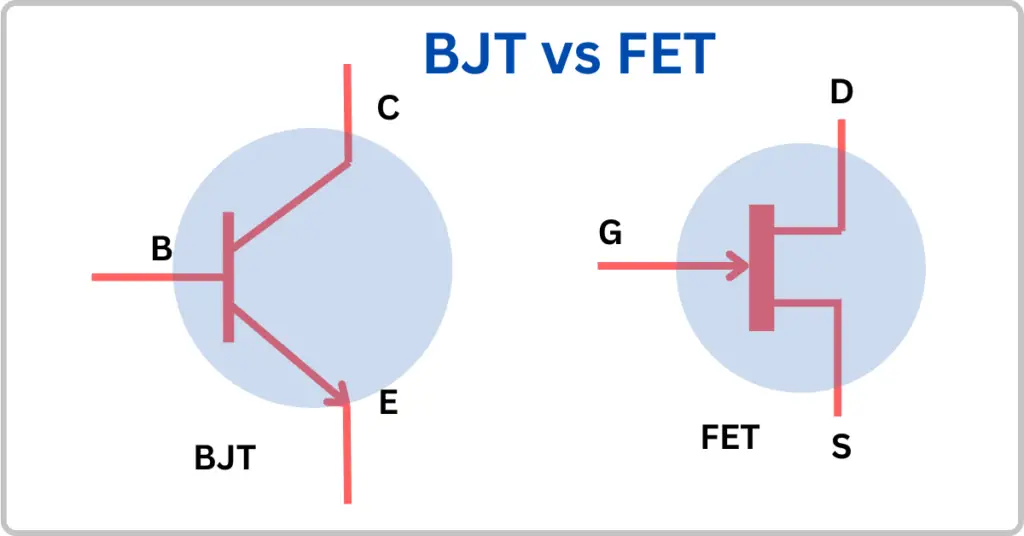The main difference between BJT and FET is that BJT is a current-controlled device, while FET is a voltage-controlled device.
Before understanding the difference between BJT and FET, let us understand the basics of BJT and FET.
What is a BJT?
A Bipolar Junction Transistor (BJT) is a type of transistor that uses both electron and hole charge carriers. A BJT has three regions: the emitter, the base, and the collector. It operates by injecting charge carriers from the emitter into the base, which is a thin and lightly doped region. These carriers then diffuse into the collector, generating a current. Based on the doping type of the regions, BJTs are classified into two types: NPN and PNP.

What is an FET?
A Field-Effect Transistor (FET) is another type of transistor that uses an electric field to control the current flow. Unlike BJTs, FETs are unipolar devices, meaning they use only one type of charge carrier: electrons (in n-channel FETs) or holes (in p-channel FETs). FETs have three terminals: the source, the gate, and the drain. The gate voltage controls the current flow between the source and the drain. FETs are classified into several types, including Junction FETs (JFETs) and Metal-Oxide-Semiconductor FETs (MOSFETs).

Differences Between BJT and FET
| Feature | BJT | FET |
|---|---|---|
| Terminals | Base, Emitter, Collector | Source, Gate, Drain |
| Type of Carriers | Bipolar (electrons and holes) | Unipolar (electrons or holes) |
| Control Mechanism | Current-controlled | Voltage-controlled |
| Current Flow | Due to majority and minority charge carriers | Due to the majority charge carriers |
| Configuration | Common emitter (CE), common base (CB), and common collector (CC) | Common source (CS), common gate (CG), and common drain (CD) |
| Input Impedance | Low | High |
| Output Impedance | High | Low |
| Switching Speed | Slower | Faster |
| Gain Bandwidth | Higher | Lower |
| Power Consumption | Higher | Lower |
| Thermal Stability | Less stable | More stable |
| Noise | Higher | Lower |
| Applications | Amplifiers, switches | Amplifiers, switches, digital ICs |
| Manufacturing Complexity | More complex | Less complex |

Summary: The difference between BJT and FET
- Type of Carriers: BJT Uses electrons and holes as charge carriers, making it a bipolar device. FET uses either electrons or holes, making it a unipolar device.
- Control Mechanism: BJT is Controlled by the current flowing into the base terminal. FET is Controlled by the voltage applied to the gate terminal.
- Input Impedance: BJTs have low input impedances, which can load down preceding stages in a circuit. FETs have high input impedances, making them ideal for applications where minimal loading is required.
- Output Impedance: BJT exhibits high output impedance. FET exhibits low output impedance.
- Switching Speed: BJT is generally slower due to charge storage and recombination. FET is Typically faster because it relies on the electric field to control the current.
- Power Consumption: BJT consumes more power due to the continuous current flow needed for operation. FET consumes less power as it only requires voltage to control the current.
- Thermal Stability: BJT is less thermally stable, and its performance is more affected by temperature changes. FET is more thermally stable, and its performance is less affected by temperature changes.
- Noise: BJTs generally have higher noise levels due to the recombination of charge carriers. FETs generally have lower noise levels, making them suitable for low-noise applications.
- Applications: BJTs are commonly used in linear amplifiers and switching applications. FETs are Widely used in amplifiers, switching, and digital integrated circuits.
- Manufacturing Complexity: BJT is more complex to manufacture due to the need for precise doping and junction formation. FET is easier to manufacture with simpler processes and less precise doping requirements.
In summary, while both BJTs and FETs are fundamental components in electronics, their differences in operation, characteristics, and applications make them suitable for various uses depending on the specific requirements of the circuit or system.